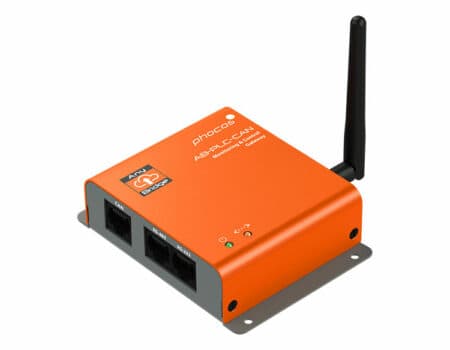No Product Found
Solar Panel Remote Monitoring
Monitoring a solar system remotely creates a real opportunity for advanced service. With the most up-to-date data, the consumer and the solar installer are in control of the solar system investment anywhere,...
Frequently Asked Questions
- How does solar remote monitoring work?
A solar power device such as the Phocos Any-Grid PSW-H Hybrid Inverter Charger is connected to a so-called gateway, like the Phocos Any-Bridge™️ AB-PLC-CAN. This unit takes all relevant local measurement values collected from the solar power device and transmits it to the internet via an existing router. Via the internet, the solar system data goes to a remote monitoring portal such as the PhocosLink Cloud. Here the data is stored and then presented in the form of charts and animated images to make it easy to interpret by the customer. This gives the customer access to the system data from anywhere in the world with an internet/web browser. Remote monitoring is a vital tool to see current data, but also historical data that can be valuable for planning and troubleshooting.
- Why is solar remote monitoring important?
Solar remote monitoring allows viewing and controlling a solar power system remotely from anywhere in the world with internet access and a web browser. That is a dramatic improvement from the early days of solar adoption. Meaning, you can be informed of how the solar system is performing at any time, even when you are not close to the solar installation. Often solar systems are in remote, unpopulated areas, so in these circumstances, it is particularly useful to be able to monitor remote solar system performance off-site. The data can help to optimize the photovoltaic system output and save costs. During system interruptions, remote monitoring of a solar installation can sometimes prevent having to visit the site in many cases or at a minimum, prevent multiple visits, preventing travel expenses and long durations of downtime. This proves valuable for remote, industrial, non-profit, residential and commercial solar projects, when an interruption occurs, the solar installer or solar expert can often diagnose issues quickly without a costly site visit or again avoiding multiple site visits. The data can also be valuable to engaged solar system owners and DIY types, to simply monitor expected energy production is working as designed.
- How can solar remote monitoring save costs?
One way solar remote monitoring saves costs is by having access to all solar power system data. Often, it is not necessary to visit the solar power system installation site for control or maintenance, thus avoiding travel costs. For certain installations, if power interruptions occur, downtime can be not only frustrating but costly, so the faster the system is diagnosed and a fix is defined and implemented, the less money is lost. On a day-to-day basis, by having an intuitive, friendly overview of current and historical data, you can make decisions about how to use AC loads. For example, when the weather is clear and solar power production is high, you can turn on higher-powered appliances such as the washing machine or dishwasher. These appliances will then be directly powered by the sun as opposed to by the electricity grid or a generator, also reducing CO2 emissions overall. Conversely, when weather conditions are poor, you may create other strategies to save energy for critical load operation.
- What is needed for solar remote monitoring?
Of course, a solar power device is needed to actually monitor, such as the Phocos Any-Grid PSW-H Hybrid Inverter Charger. Then, to collect the data, the Any-Bridge™️ AB-PLC-CAN Monitoring & Control Gateway (or similar device) is needed to integrate into the solar system installation. On the premises, where the solar power system is installed, a router is required with internet access of any form (cable, (A)DSL, or wireless via 3G/4G/5G). The AB-PLC-CAN is connected to the router wirelessly via Wi-Fi or with an Ethernet cable. Then with the right platform, the solar system data can be accessed from anywhere with an internet-enabled device that has a web browser. For a system designed with Phocos products, the platform to see the data is called the PhocosLink Cloud.
Get In Touch Not sure what you need? Talk to the experts!
India
Phocos India Solar Pvt Ltd.
Puducherry - India
Phone +91 413 2972328
info-india@phocos.com
